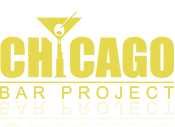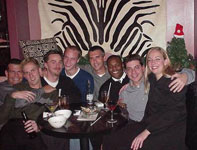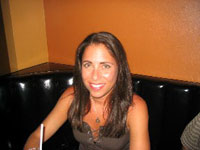“A civilized watering hole at the edge of the jungle”
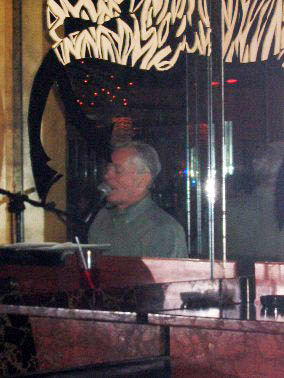 For those in the know, the Zebra Lounge is one of the best, albeit smallest, lounges in the city. The cozy, relaxed atmosphere in which you can have a blast either by singing along with lounge pianist extraordinaire Tommy Oman, or by just taking it all in with the help of steady stream of cocktails, makes the Zebra Lounge both a Gold Coast mainstay and rivals what remains of a formerly vibrant piano bar scene. The Zebra is also a most pleasant oasis away from the urban jungle around the corner that is the Rush and Division street insanity. Whichever way you slice it, the Zebra Lounge is a must stop for any lounge lizard if not your regular hang.
For those in the know, the Zebra Lounge is one of the best, albeit smallest, lounges in the city. The cozy, relaxed atmosphere in which you can have a blast either by singing along with lounge pianist extraordinaire Tommy Oman, or by just taking it all in with the help of steady stream of cocktails, makes the Zebra Lounge both a Gold Coast mainstay and rivals what remains of a formerly vibrant piano bar scene. The Zebra is also a most pleasant oasis away from the urban jungle around the corner that is the Rush and Division street insanity. Whichever way you slice it, the Zebra Lounge is a must stop for any lounge lizard if not your regular hang.
To find the unassuming Zebra Lounge, just look for it nestled into the base of the old-fashioned Canterbury Courts high-rise apartment building, in similar fashion to Bridget McNeill’s on Belmont (formerly Rose & Crown). Just look for a black, wrought-iron fence and zebra-striped awning that leads from the entrance of the building to the sidewalk. A tiny black and white Zebra Lounge sign hangs on the building’s facade, but you’re likely to miss it. Interestingly enough, rather than housing ageing Gold Coasters, Canterbury Courts houses students attending college seminars and tutoriums offered by the University of Illinois at Chicago. Both Canterbury Courts and Zebra Lounge are located just north of Division, past PJ Clarke’s and whatever establishment currently inhabits 1212 N. State (formerly Twelve 12 and the State Room). This part of State is known as “State Parkway” because of its being lined with mansions and five star hotels. This unlikeliest of locales has evidently worked well for the Zebra Lounge as it has been in business since the day Prohibition ended on December 5, 1933.
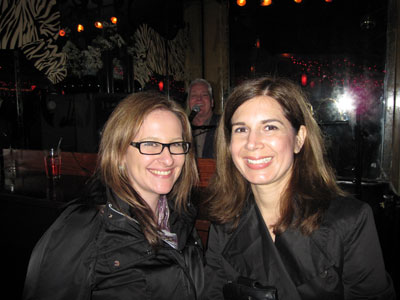
 The entrance to the Zebra Lounge can be found just inside the Canterbury Courts foyer, through a plate glass door on your left. Take care about the possibility of patrons spilling out of the bar and into you, but don’t worry about being carded or getting charged a cover as you won’t be. Inside, you’ll find a small, smoky lounge that’s not much larger than other famed Chicago legends like the Matchbox and the Tiny Lounge. The joint really starts filling up after 10pm, so get there earlier to get a seat. A black banquette along with a few low-slung tables runs along the burnt orange-painted north wall and affords the most places for your kiester. Across the ceramic tiled room, on the other side of the lone, mirrored column that holds up the student apartments above, the place to grab is the ever-popular, crescent-shaped, black leather booth above which hands a zebra pelt upon a wall painted purple. This booth is located next to the performer’s corner where a two-tier keyboard stands in front of a mirror etched with both an artist’s rendition of a zebra and the smoke from decades of exhalations. For those lucky enough to find a place to sit will find that the wooden bowls filled with free bar mix stand out (a “spicy, salty mélange of goldfish, mixed nuts, pretzels and melba toastlets,” according to Sarah Thyre), but the sporadic waitress service does not. Additional seating, though not much, can be found at the tiny bar made from cherry wood with its even smaller beer selection. You’ll find that the bartenders behind it wear black pants and white socks and tend bar under a series of lights sporting zebra shades. The single, unisex bathroom can be found between the banquette and the bar, in the north wall.
The entrance to the Zebra Lounge can be found just inside the Canterbury Courts foyer, through a plate glass door on your left. Take care about the possibility of patrons spilling out of the bar and into you, but don’t worry about being carded or getting charged a cover as you won’t be. Inside, you’ll find a small, smoky lounge that’s not much larger than other famed Chicago legends like the Matchbox and the Tiny Lounge. The joint really starts filling up after 10pm, so get there earlier to get a seat. A black banquette along with a few low-slung tables runs along the burnt orange-painted north wall and affords the most places for your kiester. Across the ceramic tiled room, on the other side of the lone, mirrored column that holds up the student apartments above, the place to grab is the ever-popular, crescent-shaped, black leather booth above which hands a zebra pelt upon a wall painted purple. This booth is located next to the performer’s corner where a two-tier keyboard stands in front of a mirror etched with both an artist’s rendition of a zebra and the smoke from decades of exhalations. For those lucky enough to find a place to sit will find that the wooden bowls filled with free bar mix stand out (a “spicy, salty mélange of goldfish, mixed nuts, pretzels and melba toastlets,” according to Sarah Thyre), but the sporadic waitress service does not. Additional seating, though not much, can be found at the tiny bar made from cherry wood with its even smaller beer selection. You’ll find that the bartenders behind it wear black pants and white socks and tend bar under a series of lights sporting zebra shades. The single, unisex bathroom can be found between the banquette and the bar, in the north wall.
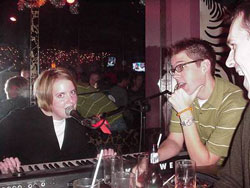 On most nights, you’ll find Tommy Oman squeezed into the tiny area behind his keyboards where you can never really tell where has hands are. Tommy usually gets warmed up around 9pm and things get into full swing shortly thereafter. If you stay long enough, you’re likely to hear stylized versions of Debbie Boone’s “You Light Up My Life,” an almost unrecognizable version of the Police’s “Every Breath You Take,” and Carol King’s “It’s Too Late Baby.” Inevitably, you’ll also hear Billy Joel’s “Piano Man,” although Tommy may choose to speed it up or slow it down to reflect his own personal flair. Any given song can be jazzed-up, waltzed-down, glam-ified, or turned into disco. This is the legacy of Tommy Oman who has been playing since the mid-sixties and used to play with Barry Manilow at the old Croyden Hotel (who is alleged to be Tommy’s ex-boyfriend). In addition to Tommy, Ruth Allyn used to perform at the Zebra Lounge but will sadly be only found belting out torch songs in that great lounge in the sky, as she passed away at the age of 65 in 2002.
On most nights, you’ll find Tommy Oman squeezed into the tiny area behind his keyboards where you can never really tell where has hands are. Tommy usually gets warmed up around 9pm and things get into full swing shortly thereafter. If you stay long enough, you’re likely to hear stylized versions of Debbie Boone’s “You Light Up My Life,” an almost unrecognizable version of the Police’s “Every Breath You Take,” and Carol King’s “It’s Too Late Baby.” Inevitably, you’ll also hear Billy Joel’s “Piano Man,” although Tommy may choose to speed it up or slow it down to reflect his own personal flair. Any given song can be jazzed-up, waltzed-down, glam-ified, or turned into disco. This is the legacy of Tommy Oman who has been playing since the mid-sixties and used to play with Barry Manilow at the old Croyden Hotel (who is alleged to be Tommy’s ex-boyfriend). In addition to Tommy, Ruth Allyn used to perform at the Zebra Lounge but will sadly be only found belting out torch songs in that great lounge in the sky, as she passed away at the age of 65 in 2002.
Tommy was there the night of my 25th birthday, which I decided to celebrate with “Smoky Lounge Night.” We started off at the Zebra Lounge, moved on to Kronie’s (not exactly a smoky lounge but on the way) and then onto the Underground Wonder Bar. While at the Zebra, Tommy happened to ask if it was anyone’s birthday:
“Hey! It’s my birthday!” I said.
“Oh, yeah? How old are ya?”
“25.”
“25? Pshaw… 35!”
“?!?”
 Those attracted to Tommy Oman’s crooning help perpetuate its quirky vibe. The crowd is somewhat older on average than those you’ll find at other notable lounges like the Long Room, Bungalow or Whiskey Sky, but just as swanky and equally if not more perverse as their younger compatriots. You’ll also find that the fashion ranges from ties to t-shirts to everything in-between at the Zebra lounge as the place draws an eclectic collection of lounge lizards, zanies, Gold Coast eccentrics, those needing Oasis from the Division Street lechery, sing-along enthusiasts, older hipsters, bewildered suburbanites that happen to stumble in, the swish crowd, the occasional transvestite (careful who you’re hitting on, lads), casts from touring musicals, conventioneers, and bachelorette parties. In addition to Tommy, the crowd comes in for the open mic night held every Sunday, magicians on Tuesdays, and comedy night on every second Thursday of the month.
Those attracted to Tommy Oman’s crooning help perpetuate its quirky vibe. The crowd is somewhat older on average than those you’ll find at other notable lounges like the Long Room, Bungalow or Whiskey Sky, but just as swanky and equally if not more perverse as their younger compatriots. You’ll also find that the fashion ranges from ties to t-shirts to everything in-between at the Zebra lounge as the place draws an eclectic collection of lounge lizards, zanies, Gold Coast eccentrics, those needing Oasis from the Division Street lechery, sing-along enthusiasts, older hipsters, bewildered suburbanites that happen to stumble in, the swish crowd, the occasional transvestite (careful who you’re hitting on, lads), casts from touring musicals, conventioneers, and bachelorette parties. In addition to Tommy, the crowd comes in for the open mic night held every Sunday, magicians on Tuesdays, and comedy night on every second Thursday of the month.
“The Zebra is what I call a hideaway, a bar that takes you away from the more obvious street action in a given area. Hideaways have their purpose for rest, relaxation, recuperation, and solitude. If you want to go where you can have a conversation and not be found, this is a place to consider. Perhaps my favorite place in this part of town.”
– Dennis McCarthy, The Great Chicago Bar and Saloon Guide (1985)
Named after a long-forgotten tavern in New York and being a living tribute to some of the now-defunct Chicago piano bar legends like Toulouse and the Gold Star Sardine Bar, the Zebra Lounge also captures some of the “spirit” evident in the 2001 film, Zebra Lounge, where “a bored suburban couple try to spice things up one night with a couple they meet at the Zebra Lounge. They erroneously assume their new friends are normal but are later haunted by the experience,” according to the critics. The Zebra Lounge is also the location every March, July and November for the Dil Pickle Club (sic), consisting of spoken word, music and performance art, resurrected by editors from Lumpen and Stop Smiling magazines and based on the activist “Wobbly” Jack Jones’s original brainchild that originally ran from 1914-1933. All in all, you’re bound to find that this New York-like small hotel bar is one of Chicago’s best lounges, particularly given its size, and rivals that of other more popular spaces like the Redhead Piano Bar, Jilly’s, Davenport’s, Coq d’Or, and the Pump Room. Atta boy, Tommy – keep it up.
[back to the Chicago Bar Project]

